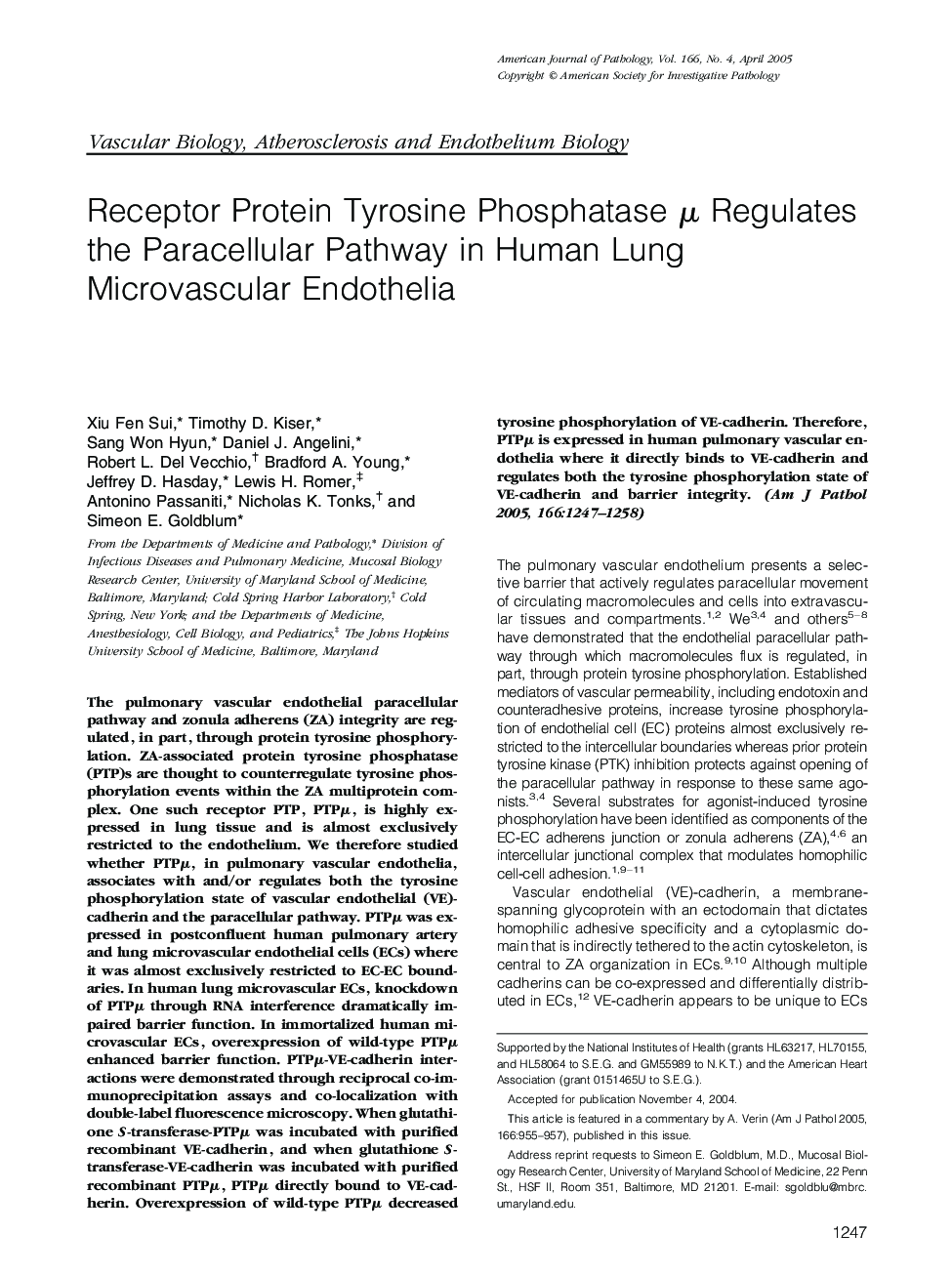| Article ID | Journal | Published Year | Pages | File Type |
|---|---|---|---|---|
| 9943420 | The American Journal of Pathology | 2005 | 12 Pages |
Abstract
The pulmonary vascular endothelial paracellular pathway and zonula adherens (ZA) integrity are regulated, in part, through protein tyrosine phosphorylation. ZA-associated protein tyrosine phosphatase (PTP)s are thought to counterregulate tyrosine phosphorylation events within the ZA multiprotein complex. One such receptor PTP, PTPμ, is highly expressed in lung tissue and is almost exclusively restricted to the endothelium. We therefore studied whether PTPμ, in pulmonary vascular endothelia, associates with and/or regulates both the tyrosine phosphorylation state of vascular endothelial (VE)-cadherin and the paracellular pathway. PTPμ was expressed in postconfluent human pulmonary artery and lung microvascular endothelial cells (ECs) where it was almost exclusively restricted to EC-EC boundaries. In human lung microvascular ECs, knockdown of PTPμ through RNA interference dramatically impaired barrier function. In immortalized human microvascular ECs, overexpression of wild-type PTPμ enhanced barrier function. PTPμ-VE-cadherin interactions were demonstrated through reciprocal co-immunoprecipitation assays and co-localization with double-label fluorescence microscopy. When glutathione S-transferase-PTPμ was incubated with purified recombinant VE-cadherin, and when glutathione S-transferase-VE-cadherin was incubated with purified recombinant PTPμ, PTPμ directly bound to VE-cadherin. Overexpression of wild-type PTPμ decreased tyrosine phosphorylation of VE-cadherin. Therefore, PTPμ is expressed in human pulmonary vascular endothelia where it directly binds to VE-cadherin and regulates both the tyrosine phosphorylation state of VE-cadherin and barrier integrity.
Related Topics
Health Sciences
Medicine and Dentistry
Cardiology and Cardiovascular Medicine
Authors
Xiu Fen Sui, Timothy D. Kiser, Sang Won Hyun, Daniel J. Angelini, Robert L. Del Vecchio, Bradford A. Young, Jeffrey D. Hasday, Lewis H. Romer, Antonino Passaniti, Nicholas K. Tonks, Simeon E. Goldblum,
